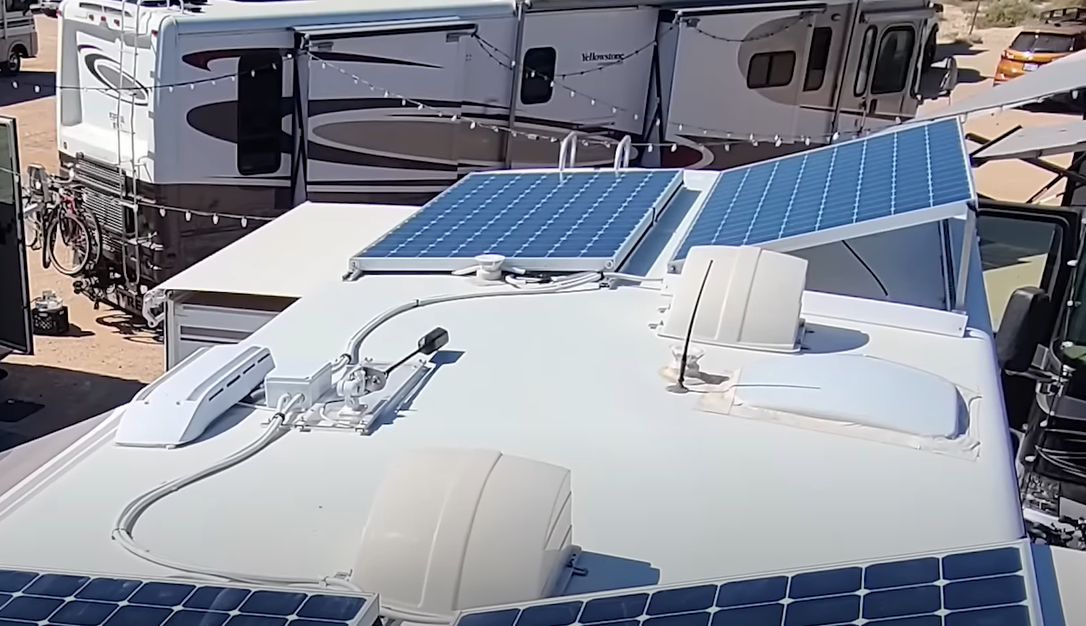
Setting up your RV with solar power systems is becoming increasingly popular among RVers who want to travel off-grid and reduce their reliance on traditional electrical hookups. But how do you set up your RV with solar power systems, and how much does it usually cost? In this article, we’ll explore the steps to setting up a solar power system for your RV and the costs involved.
Step 1: Determine Your Energy Needs
The first step in setting up a solar power system for your RV is to determine your energy needs. This includes calculating the total power consumption of your RV appliances and electronics, as well as the average amount of sunlight you can expect to receive in your travel locations. You will also need to consider your battery storage capacity and the amount of power you will need to recharge your batteries.
Step 2: Choose the Right Solar Panels
Once you have determined your energy needs, you can choose the right solar panels for your RV. Solar panels come in a variety of sizes, types, and power outputs. The most common types of solar panels used in RV applications are monocrystalline and polycrystalline panels. Monocrystalline panels are generally more efficient and have a higher power output per square foot, but they are also more expensive. Polycrystalline panels are less expensive but have a lower power output per square foot.
You will also need to consider the physical size and weight of the solar panels you choose, as well as their compatibility with your RV’s electrical system.
Step 3: Choose the Right Charge Controller
The next step in setting up your RV with solar power is to choose the right charge controller. The charge controller regulates the amount of power going into your RV’s batteries and helps prevent overcharging and damage to your batteries. There are several types of charge controllers available, including PWM (Pulse Width Modulation) and MPPT (Maximum Power Point Tracking) controllers. MPPT controllers are generally more efficient and offer better performance in low light conditions.
Step 4: Choose the Right Batteries
Your RV’s batteries are a critical component of your solar power system. The type and size of batteries you choose will depend on your energy needs and storage capacity requirements. Lithium-ion batteries are becoming increasingly popular in RV applications due to their high energy density and long lifespan. However, they are also more expensive than traditional lead-acid batteries.
Step 5: Install the Solar Panels and Components
Once you have chosen the right solar panels, charge controller, and batteries, it’s time to install them on your RV. Solar panels should be mounted on the roof of your RV to maximize exposure to sunlight. You will need to run wiring from the solar panels to the charge controller and then to your batteries. It’s important to follow proper wiring and grounding procedures to prevent damage to your system and ensure safe operation.
Step 6: Monitor Your System Performance
After your solar power system is installed, it’s important to monitor its performance regularly. This includes monitoring your battery levels, charge controller operation, and solar panel output. You may also want to invest in a monitoring system that can track your system’s performance in real-time and alert you to any issues or problems.
Cost of Solar Power Systems for RVs
The cost of setting up a solar power system for your RV can vary widely depending on the size and complexity of your system. On average, a basic solar power system for an RV can cost anywhere from $1,500 to $3,000, including solar panels, charge controller, and batteries. However, more complex systems with higher power outputs and additional components can cost $10,000 or more.
It’s important to keep in mind that while the upfront cost of a solar power system for your RV may be high, it can provide significant long-term cost savings by reducing your reliance on traditional electrical hookups and generator fuel. Additionally, a solar power system can be a more environmentally friendly option, reducing your carbon footprint and impact on the environment.
It’s also important to note that there may be additional costs involved in setting up a solar power system for your RV, such as installation fees, wiring and mounting hardware, and monitoring systems. It’s a good idea to do your research and compare prices from different suppliers and contractors to ensure you’re getting the best value for your investment.
In addition to the initial cost of setting up a solar power system for your RV, there may be ongoing maintenance and repair costs to consider. Solar panels require periodic cleaning and inspection, and batteries may need to be replaced after a certain number of years.
Conclusion
Setting up your RV with a solar power system can provide many benefits, including the freedom to travel off-grid and reduce your reliance on traditional electrical hookups. By following the steps outlined in this article, you can choose the right components for your system, install them properly, and monitor your system’s performance to ensure optimal operation.
While the cost of setting up a solar power system for your RV can vary widely, it’s important to consider the long-term cost savings and environmental benefits that such a system can provide. With proper maintenance and care, a solar power system for your RV can provide reliable and efficient power for many years to come.